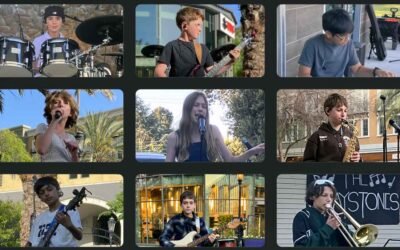The Beatles, A Cultural Phenomenon
The Beatles: An unparalleled phenomenon.
The Beatles are not merely a band; they are a cultural revolution. From their explosive arrival in the early 1960s to their enduring influence today, John Lennon, Paul McCartney, George Harrison, and Ringo Starr have redefined popular music, fashion, and global youth culture. Their journey – from Liverpool’s grimy clubs to worldwide superstardom spanned only a decade, yet their songwriting, recording techniques, and artistic innovations continue to resonate today.
The Beatle’s story begins in post-war Liverpool, a city shaped by maritime trade and middle-class resilience. In 1957, 16-year-old John Lennon formed The Quarrymen, a skiffle group inspired by American rock-‘n-roll pioneers like Elvis Presley and Buddy Holly. He met 15-year-old Paul McCartney at a church fete, who soon joined as lead guitarist. By 1956, McCartney recruited his school pal, George Harrison. George was already a prodigious guitarist whose skill surpassed his age. After cycling through drummers, including George Best, and adopting the name The Beatles, a nod to Buddy Holly’s Crickets, the band honed their craft in Hamburg’s red-light district clubs and marathon sets, sometimes playing a gruelling eight hours per night. They forged their tight musicianship, onstage presence, charisma, and rebellious image there.
Returning to Liverpool, the Beatles became regulars at The Cavern Club, where they appeared 292 times. For their first appearance there, they were paid a magnificent six Pounds. In 1961, their future Manager, Brian Epstein, discovered them there. Epstein polished their image, replacing scruffy leather jackets with suits, and secured a record deal with EMI’s Parlaphone label. In September 2015, the original 1962 contract between the Beatles and Prarlaphone was sold at Sotheby’s for $548,000. They were assigned producer George Martin, known as “The fifth Beatle,” who was initially sceptical of their demo tapes but won over by their humor and originality. Adding George Martin to the mix was a masterstroke.
In 1962, Ringo Starr replaced George Best, establishing the classic and enduring lineup. Lennon called Star “The rock on which our songs were built”. The Beatles started their phenomenal journey when they released their debut single, “Love Me Do,” in 1962. This reached number seventeen on the British charts, but the release of “Please Please Me” in 1963 ignited “Beatlemania” – a frenzy of screaming fans and media obsession. The Beatle’s February 1964 appearance on the Ed Sullivan Show – watched by 73 million Americans – marked the zenith of the “British Invasion” in the USA. Over 50,000 applications for this Ed Sullivan Show, in a theatre which only seated 728, were applied for.
One of the highlights of Beatlemania was in Australia in 1964. Over 300,000 fans accompanied the trip from the airport to their hotel, and the journey from the Melbourne airport had over 20,000 fans as spectators.
Chart-toppers like “I Want to Hold Your Hand” and “She Loves You” fused McCartney’s melodic sweetness with Lennon’s raw vocal energy. Their harmonies and lyrics were already notable. Their album “With the Beatles” became the first in UK chart history to sell a million copies. At one stage, the Beatles occupied the top spot on the UK charts for fifty-one consecutive weeks. The Beatles spent 132 weeks at #1 on the UK charts and they had 15 No1’s. That included 15 UK #1 albums. Another chart record from the Beatles was that in one week of April 1964 they had 14 songs in the Billlboard Top 100.
Filming “A Hard Day’s Night” and relentless touring were a huge strain. Between 1964 and 1966, a prodigious workload resulted in the release of five albums, their inclusion in the film “A Hard Day’s Night,” and relentless touring. This resulted in exhaustion, internal friction, and creative restlessness. In 1966, after their final concert in San Francisco, they retired from live performances. Freed from touring, the Beatles now reinvented themselves as studio pioneers under the guidance of George Martin. Now, they reinvented themselves as a studio group. “Sgt Pepper’s Lonely Hearts Band,” released in 1967, incorporated orchestral arrangements, tape loops, and psychedelic lyricism, reflecting their immersion in counterculture and Eastern Spirituality.
Albums like “Revolver,” released in 1966, and “Sgt. Pepper’s Lonely Hearts Club Band,” released in 1967, incorporated orchestral arrangements, tape loops, and psychedelic lyricism. Due to the complexity of their recordings, no songs from “Revolver” were ever performed live.
John Lennon infamously remarked that the Beatles were bigger than Jesus, which resulted in many stations banning their music. Strangely, one of the stations that banned their music, KLUE in Longview, Texas, suffered a lightning strike on the day after banning the Beatles. They were taken off air, and the News Editor was struck unconscious.
But the pressures continued, and tension simmered. Lennon’s avant-garde interests clashed with McCartney’s perfectionism, and Harrison resented his limited songwriting role. Their relationship also suffered due to business ventures and disputes, such as disagreements over their Apple Label.
The band was fracturing. Lennon, then in a relationship with Yoko Ono, which caused friction, and his divorce from his first wife, Cynthia Lennon, privately announced his departure. The last time the Beatles spent in studios together was the completion of the Abbey Road track; “I want you (She’s So Heavy),” on 29th August 1969.The Beatles disbanded in April 1970, shortly after the release of “Let It Be.”
The Beatles grew through a series of styles. Their early work epitomized the Merseybeat sound: upbeat tempos, close harmonies, and lyrics about young love. “She Loves You,” released in 1963 with its iconic “Yeah, Yeah, Yeah!” refrain, became an anthem for teenage euphoria. “A Hard Day’s Night, released in 1964, illustrated Lennon’s wit; “You’re gonna carry that weight a long time,” while ”Yesterday” demonstrated McCartney’s mastery of melancholic lyrics, and became the most covered song in history
Maturity came with “Rubber Soul,” in 1965, when the Beatles transcended popular conventions. “Norwegian Wood introduced surreal storytelling. In 1965, David Crosby of the Byrds introduced George Harrison to the work of Indian musician Ravi Shankar, hence his interest in Indian music and the sitar. The Beatles had changed the face of rock-n-roll. “Revolver” pushed the boundaries even further. “Tomorrow Never Knows” used tape loops and LSD-inspired lyrics, while “Eleanor Rigby” married Baroque strings to a tale of loneliness.
“Sgt. Pepper,” released in 1967 is often hailed as the first “concept” album. It blended music-hall whimsey in “When I’m Sixty-Four, with psychedelic confusion in “A Day In The Life”.
The “White Album” gave room for their diverging styles; McCartney’s pro-metal in “Helter Skelter” contrasted with Lennon’s minimalist “Julia,” while Harrison’s “While My Guitar Gently Weeps” featured Eric Clapton. “Abbey Road,” released in 1959, balanced McCartney’s polished lyrics in “Golden Slumber” with Harrison’s soulful “Something,” which was called by Frank Sinatra the most fantastic love song ever written.
Beatles studio sessions were a feast of humor and tension. All was not always perfect. Listen to “Hey Jude” at 2.58. There you will hear Lennon shout “Fucking Hell” as he hits a bum note when singing backing vocals.
The “family” of musicians worldwide was relatively close at this time. The Rolling Sones and the Beatles had a legendary public animosity. However, that was all for show! The two groups were very close. One of the Stones’s earliest releases, “We Love You,” featured both Paul McCartney and John Lennon. The Stone’s first hit, “I wanna be your man” was written by Lennon and McCartney at the Stone’s request. The Stones’s most recent album includes Paul McCartney playing bass on one song. The Beatles and the Stones carefully colluded to avoid releasing singles simultaneously, thus improving sales for both groups. Mike Vickers, Manfred Mann’s guitarist, conducted the orchestra for the Beatles recording of “All You Need Is Love,” and George Harrison wrote “Here Comes The Sun” in Eric Clapton’s back garden. Clapton was featured on some of the Beatles’ releases. Marianne Faithful, Pattie Boyd, Brian Jones, and Donavan all appeared as background singers on “Yellow Submarine.” Mick Jagger appeared sitting very close to Paul McCartney, smoking a large joint, during the 1967 Beatles’ “All You Need Is Love” performance on the global TV link of “Our World.” The Who, Rod Stewart, Jimmy Hendriks, and Sonny and Cher worked at Abbey Road Studios simultaneously as the Beatles; they met and formed lasting relationships. They were introduced to pot by Bob Dylan.
The Lennon-McCartney songwriting partnership redefined pop songwriting, blending rock, classical, folk, and Indian traditions. Their lyrics evolved from simple romance to introspection in “In My Life” and socially conscious commentary in “Revolution.” Harrison’s incorporation of Indian ragas in “Within You, Without You” and Starr’s underrated drumming in “Rain” expanded rock’s vocabulary. With George Martin, the Beatles transformed recording studios into innovative creative laboratories. Martin’s contributions were numerous but included backward tape effects in “Rain,” and “I’m Only Sleeping,” orchestral crescendos as in “A Day In The Life,” and modular recording where a final song was pieced together from portions of many takes such as “Strawberry Fields Forever.”
The Beatles popularized long-form albums over singles, inspiring the 1970 rock album era. Music videos and their 1967 global broadcast preceded live-streamed concerts. “Hard Day’s Night” pioneered music videos and live-streamed concerts. Their Apple Label, whilst financially chaotically implemented, laid the foundations for artist-led self-publishing and releasing.
One week in 1964, the Beatles held twelve of Billboard’s Top Hundred singles positions, five of which were the top five—a record that has yet to be beaten. Their workload, combined with touring, was prodigious. In the eight years from 1962 to 1970, the Beatles released twenty-four singles and twelve studio albums. They were the first group to sell more than a million copies of a single album. At one stage, they stayed at the top of the UK charts for fifty-one consecutive weeks. In November 2023 their “Now and Then” topped the UK charts. This was sixty years after their first UK chart-topper, a staggering lifecycle for any band. The album “Abbey Road” returned to number one on the charts in 2019, fifty years after its original release. Again, this is a tribute to the Beatles’ talent, ethos and success.
Even after disbanding, the group’s artists impacted popular music significantly. Lennon’s solo work blended political and social activism with raw confession. In 1971, “Imagine” became a peace anthem. “Jealous Guy” and “Mother” revealed his vulnerabilities. His 1980 comeback with “Double Fantasy” was his final release due to his murder, cementing his status as a cultural martyr.
Paul McCartney’s band “Wings” achieved 1970s hits like “Band On The Run” and “Maybe I’m Amazed.” His collaborations with artists such as Stevie Wonder and Michael Jackson and live performances at venues such as the 2022 Glastonbury Festival underscore his relentless creativity. Now 83, he still performs extensively. Yes, his voice is past its prime, but his on-stage presence is as commanding as ever.
George Harrison’s only ever-performed live song with the Beatles was “If I Needed Someone.” Yet, his solo debut, “All Things Must Pass,” in 1970, was a critical triumph and featured “My Sweet Lord.” He organized the 1971 Concert for Bangladesh, the first major charity benefit that spawned many others. “Cloud Nine” was released in 1987, and collaborations with the Travelling Wilburys revealed his unstated genius. His “All Those Years Ago,” released in May 1981, is a tribute to John Lennon and includes the three remaining Beatles: Harrison, McCartney, and Starr.
Ringo Starr’s early solo hits, “Photograph” and “It Doesn’t Come Easy,” as well as his on-stage and film presence, showcased his charm and humor. His All-Star band tour and his EP of 2020 “Zoom In” reflected his enduring appeal.
The Beatles’ impact on popular music is immeasurable. They reshaped popular music into an art form, inspiring generations of artists from Oasis to Taylor Swift, and remain internet streaming giants. “Here Comes The Sun” exceeded one billion Spotify plays in 2023. Their 2023 AI-assisted hit single, “Now And Then”—with close to one million YouTube views—is referred to as “the last Beatles song” and proves their enduring popularity.
As a group and as individuals, they proved their relevance and timeliness. They struggled to navigate fame’s pitfalls but delivered music that would survive forever and crafted distinct legacies. They remain the definitive example of creativity, collaboration, and cultural influencers.





